ADVERTISEMENT
Photos
Rivière Grise in its Second Phase
Haitian Prime Minister Lamothe recently reviewed the Rivière Grise project in Cul-de-Sac. The Treasury Department subsidized the project for 300 million gourdes, along with the support of the Agriculture Commission. The construction project is rebuilding the levees and reforesting the area around Rivière Grise.
The Haitian government wishes to improve the infrastructure of the Rivière Grise to avoid damaging crops, and forcing people to leave their homes when the floods come during the rainy season.
Riviere Grise Project to Improve Life for Populace
Cul de Sac's Riviere Grise has deteriorated over 50 years. A project to rebuild its levees and reforest its land is costing 300 million gourdes. Prime Minister Lamothe visited the site to monitor its second phase.
Levees need shoring up and re-contouring. Seasonal rains have destroyed the area with flooding Riviere Grise cannot contain. Soil erosion has done damage, and trees have been cut down.
The government recognizes it must maintain Riviere Grise's watersheds and forests.
Riviere Grise Overhaul Over Due
Here is a picture of Riviere Grise affecting the life of the population. The government is committed to improving the Riviere Grise, neglected for the past half century. Its levees need rebuilding and land reforested. Prime Minister Lamothe traveled to Cul de Sac to monitor the project's progress.
It will cost the government 300 million gourdes to complete the project, fortifying the levees. Dirt and rocks are being used to re-contour its embankments. The land must also be reforested.
The Riviere Gris improvement of its watersheds will avoid flood water overrunning its banks, ruining crops.
Riviere Grise Gets a Second Life
Prime Minister, Lamothe, visited Cul de Sac to review the Riviere Grise project supported by the Agriculture Commission, financed by the Treasury Department at 300 million gourdes. The project will re-contour levees and replant trees destroyed by tropical storms. The project is in its second phase. Workers have finished eight kilometers so far.
The Haiti government wants updates about the project. It is determined to better lives of the populace, so they should benefit from the rebuilt levees.
Maurice Sixto, Painting of Lea Kokoye
Maurice Alfredo Sixto was born in a wealthy family on May 23, 1919 in Gonaives. His father was an engineer with exact name of his son. His grandfather was an immigrant from the Virgin Islands. He was pursuing his career as a radio broadcaster when he suffered glaucoma became legally blind at the age of 40. He began his career as a tourist guide and a translator, served as a press secretary to the librarian of the American Embassy. He served as a teacher in Democratic Republic of the Congo nearly for a decade. He worked and spoke with his pen for the oppressed people of his country till his death in 1984. He will remain in the mind of Haitians forever.
Maurice Alfredo Sixto was born in a wealthy family on May 23, 1919 in Gonaives. His father was an engineer with exact name of his son. His grandfather was an immigrant from the Virgin Islands. He was pursuing his career as a radio broadcaster when he suffered glaucoma became legally blind at the age of 40. He began his career as a tourist guide and a translator, served as a press secretary to the librarian of the American Embassy. He served as a teacher in Democratic Republic of the Congo nearly for a decade. He worked and spoke with his pen for the oppressed people of his country till his death in 1984. He will remain in the mind of Haitians forever.
Maurice A SIXTO a real anti-corruption
Maurice Sixto is well known as the eliminator of 'Restavèk' system in Haiti. He also played an efffective role against corruption in all forms in Haiti. A non-profit organization named 'Maurice Sixto Foundation A' has been formed to work for the improvement in the field of education, culture and human rights, raise awareness about "Restavèk" system in Haiti and work in favor of restoring rights to the children in Haiti on the recommendations based by ISPCAN or International Society for Prevention of Child Abuse and Neglect. FMAS won international accolade in February this year, making its country a winner out of twenty five countries around the world in respect of working for the well beings of women, especially children. This distinction allowed FMAS to win prestigious "Award Honorary Membership" of ISPICAN.
Picture of Maurice Sixto and Le Kokoye Painting
The FMAS continues its advocacy work on child domestic work, this time in Petit-Goave.
The FMAS or Maurice Sixto Foundation A was created to raise awareness about 'restavek' in Haiti. The foundation is visiting every corners of Haiti to make people aware of the pains and miseries of the oppressed Haitians. They have sensitized hundreds of people in Port-au-Prince (West) and also visited Southeast Valley of Jacmel. They visited Petit- Goave on 15 August on the occasion of the Employers Party. An official Gerda L Morin, in an introductory message said, if you are here with us at the conference, we would request you to be a part of us in a struggle beneficial to Haiti.
Maurice Sixto will live forever
Maurice Sixto died on 12 May 1984. Until recently, the Haitian government hardly acknowledge the magnitude of restavek problem and argues that it is a traditional way for poor rural family. In the name of Maurice Sixto, we should call on the Haitian government to come up with proper effective plans to eradicate restavek in Haiti so that it becomes history.
Painting of Lea Kokoye - Maurice Sixto
Here is a painting of the famous character Lea Kokoye.
Alexander Maurice Sixto is the name of greatest Haitian storyteller who alone played many characters that he himself created. The creator with many talents raised his fingers at all the wounds that plagued the lives of Haitian people and fought against the social injustice in Haiti. He was one of the few who first advocated introduction of Haitian Creole in school teaching. He despised child abuse and always spoke against 'restavek' which he thought was another name of child slavery. "Restavek" are the poor countryside children sent to the houses of the wealthy families in the urban area by their parents so that they can live a better life. But in most cases, the rich people used to exploit them and use treat as slaves. Maurice Sixto narrated the pains and miseries of the 'restaveks' through his fictional character named 'Sainte Anise'.
Maurice Alfredo Sixto in Congo
Here is a picture of the Haitian comedian Maurice Alfredo Sixto in Congo.
Maurice Alfredo Sixto born to an engineer (his father had the exact same name) on 23 May 1919. Being the son of a wealthy father he attended the most prestigious school for his secondary studies at St Louis de Gonzague. Upon graduation, he went to join Haitian Military Academy but studied there for three months and ultimately joined law courses. He was a man of many characters--an ambassador, story teller, social reformer, radio presenter, reporter, tour guide are few to name.



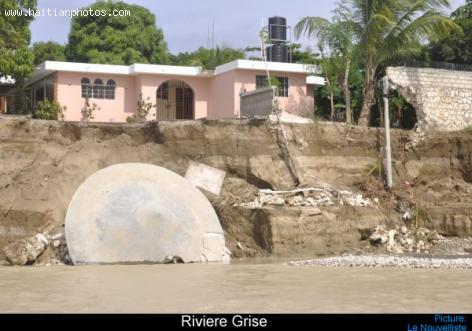

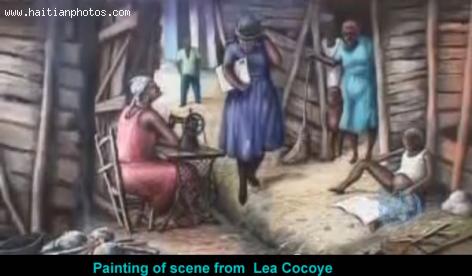
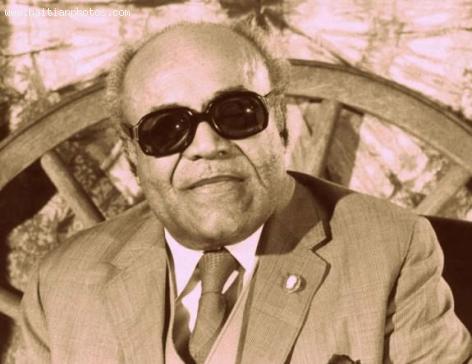
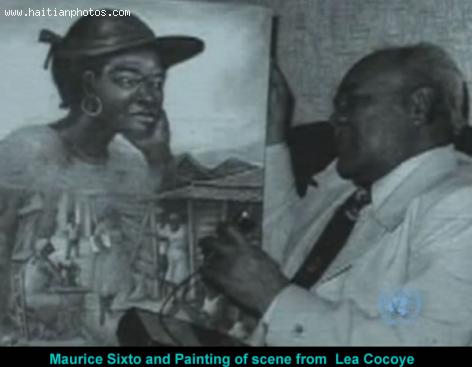
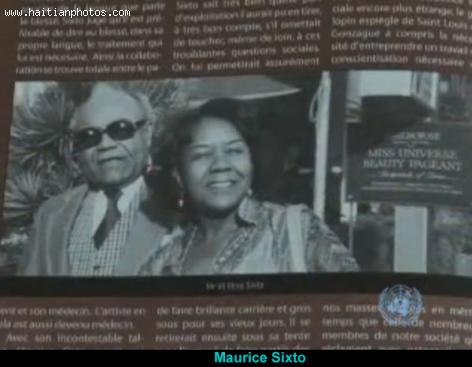
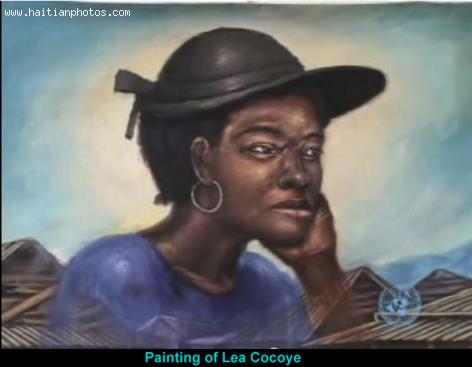
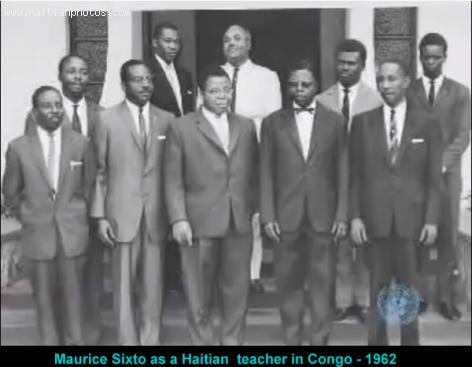
 Haiti License Plate or Plaque d'immatricules a DGI
Haiti License Plate or Plaque d'immatricules a DGI  Gas Station In Haiti
Gas Station In Haiti 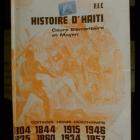 Histoire D'Haiti
Histoire D'Haiti 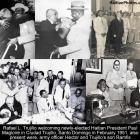 Rafael L. Trujillo welcoming Paul Magloire in Santo Domingo
Rafael L. Trujillo welcoming Paul Magloire in Santo Domingo  Jovenel Moise, the president has spoken. Period
Jovenel Moise, the president has spoken. Period  Pope Francis appointed Mgr. Launay Saturne Archbishop of...
Pope Francis appointed Mgr. Launay Saturne Archbishop of...  Dr. Henri Ford, First Haitian Dean At University of Miami Med...
Dr. Henri Ford, First Haitian Dean At University of Miami Med...  Haitians, the second largest black immigrant group in the US
Haitians, the second largest black immigrant group in the US 



